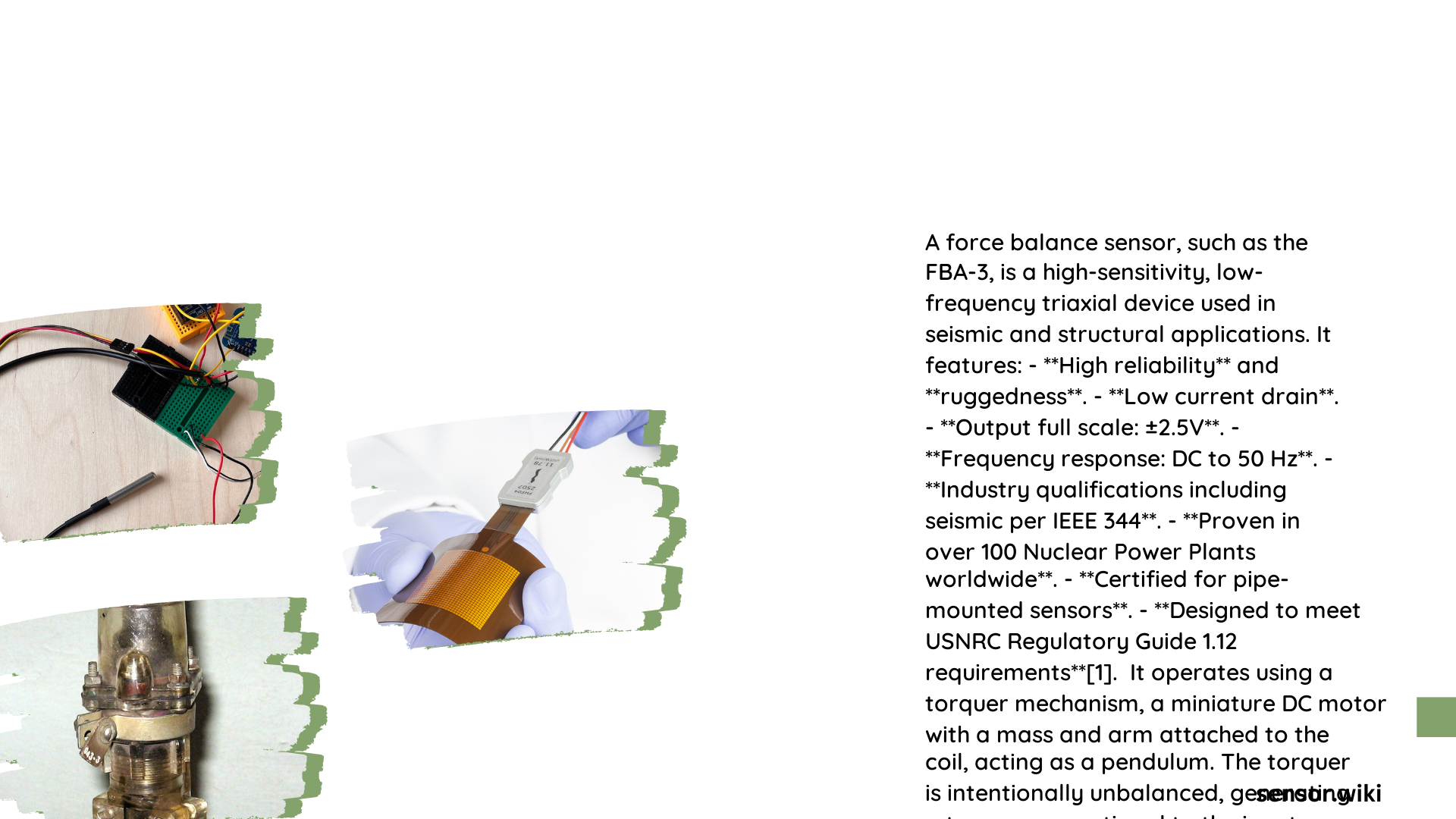Force balance sensors represent sophisticated measurement devices capable of delivering exceptional precision in force and acceleration detection across multiple industrial domains. These advanced transducers utilize intricate servo mechanisms to provide ultra-high resolution measurements, enabling critical performance tracking in aerospace, automotive, and scientific research environments with remarkable accuracy and stability.
What Are Force Balance Sensors?
Force balance sensors are specialized measurement instruments designed to detect and quantify forces with extraordinary precision. Unlike traditional sensing technologies, these devices employ sophisticated feedback mechanisms to maintain equilibrium while measuring applied forces.
Key Characteristics of Force Balance Sensors
| Characteristic | Performance Metric |
|---|---|
| Measurement Range | 0.0001g – 200g |
| Frequency Response | DC – 1000 Hz |
| Typical Accuracy | ±0.1% Full Scale |
| Operating Temperature | -40°C to +85°C |
How Do Force Balance Sensors Work?

Force balance sensors operate through a complex servo mechanism that maintains constant internal displacement. When an external force is applied, the sensor generates a compensating electrical signal proportional to the input force, ensuring exceptional linearity and minimal hysteresis.
Core Operational Principles
- Servo Feedback Loop: Continuously monitors and corrects internal displacement
- Electromagnetic Compensation: Generates precise counteracting forces
- High-Resolution Transduction: Converts mechanical input into electrical signals
Where Are Force Balance Sensors Utilized?
Aerospace Applications
Force balance sensors play critical roles in aerospace environments, providing:
– Precise navigation system measurements
– Spacecraft acceleration tracking
– Structural load monitoring
– Vibration analysis in extreme conditions
Automotive Performance Monitoring
In automotive industries, these sensors enable:
– Vehicle dynamics assessment
– Suspension system evaluation
– Crash test instrumentation
– Performance optimization research
Civil Engineering Implementations
Civil engineering applications include:
– Structural health monitoring
– Bridge and infrastructure load assessment
– Seismic activity detection
– Geotechnical research instrumentation
What Determines Force Balance Sensor Accuracy?
Several factors contribute to force balance sensor accuracy:
- Calibration Precision
- Regular calibration intervals (6-12 months)
- Controlled environmental conditions
-
Specialized calibration equipment
-
Environmental Considerations
- Temperature stability
- Vibration resistance
-
Electromagnetic interference protection
-
Sensor Design Parameters
- Servo mechanism quality
- Electronic feedback loop performance
- Material selection and manufacturing tolerances
Comparative Analysis of Force Balance Sensor Types
Electromagnetic Force Balance Sensors
- Advantages: Highest accuracy, minimal hysteresis
- Typical Applications: Aerospace, scientific research
- Cost Range: $2,000 – $5,000
Piezoelectric Sensors
- Advantages: High sensitivity, rapid response
- Typical Applications: Dynamic force measurements
- Cost Range: $500 – $2,000
Strain Gauge Sensors
- Advantages: Cost-effective, versatile
- Typical Applications: Industrial weight measurement
- Cost Range: $200 – $1,000
Future Developments in Force Balance Sensor Technology
Emerging trends indicate continued improvements in:
– Miniaturization
– Enhanced digital signal processing
– Increased temperature range tolerance
– Integration with IoT and smart monitoring systems
Conclusion
Force balance sensors represent a pinnacle of precision measurement technology, offering unparalleled accuracy across diverse industrial applications. Their sophisticated design and exceptional performance continue to drive technological innovation.
